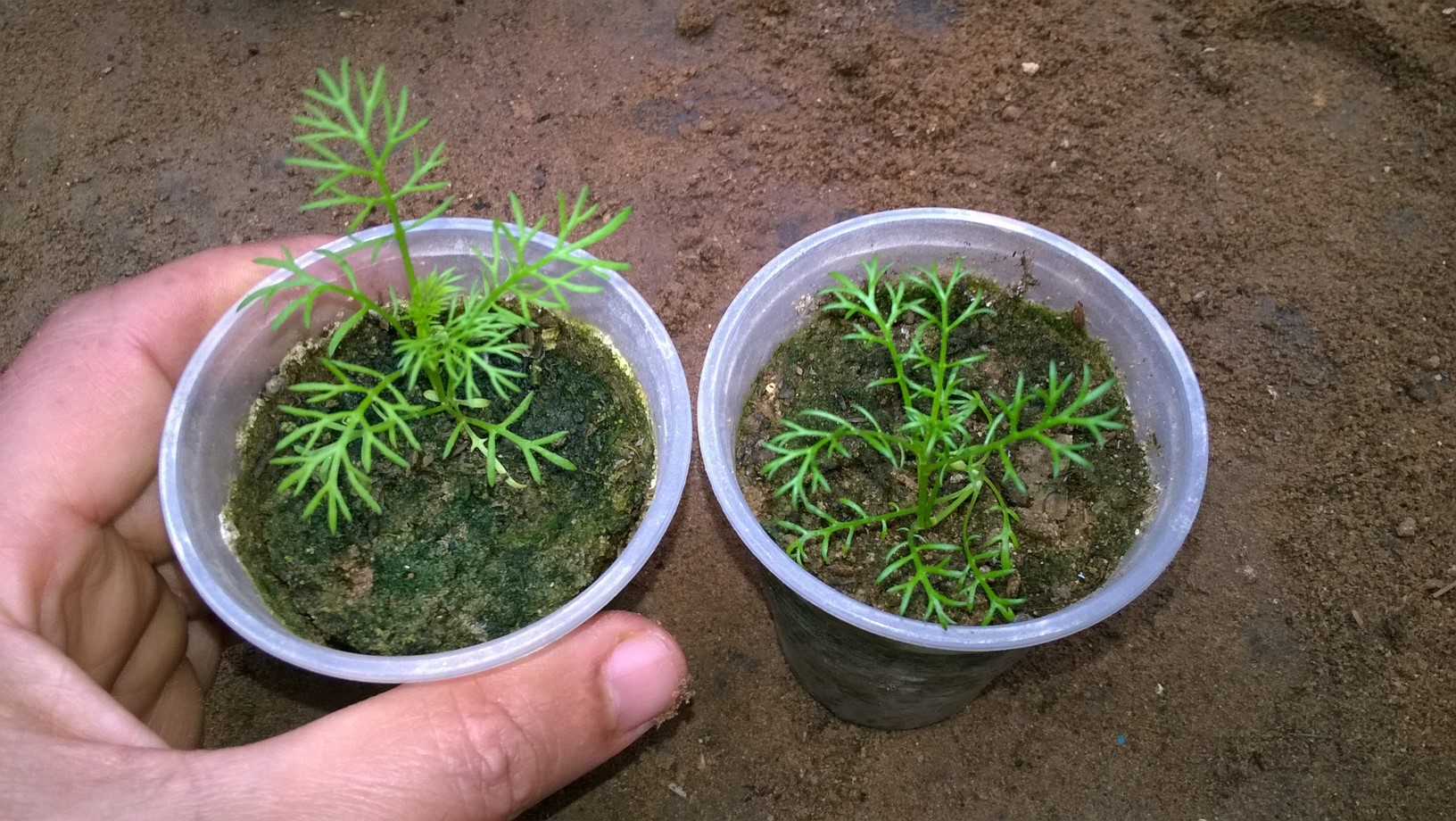There are two kinds of Chamomile
Roman chamomile (Chamaemelum nobile)
German chamomile (Matricaria recutita)
Of the two most common types of chamomile, the Roman variety has a stronger and slightly more bitter flavor; most chamomile tea and herbal medicine contain the German type, while chamomile essential oil usually contains the Roman type. When distilled, the oil of Roman chamomile can be used topically to reduce swelling, infection, or inflammation. Because of its apple-like scent when trodden underfoot, this plant often acts as a ground cover or lawn substitute; traditional chamomile lawns can still be found in England, most notably at Buckingham Palace. The Roman variety is the true chamomile, but German chamomile is used herbally for nearly the same things. Both varieties produce similar flowers that resemble daisies, and have similar uses and attributes.Roman Chamomile
German Chamomile
German chamomile is native to Europe, North Africa, and some parts of Asia. It is closely related to the Roman chamomile, which has the same medicinal properties as German chamomile. Looks similar to Roman chamomile, with the differences being that German chamomile grows upright to the height of about 1 to 2 feet and is a reseeding annual. Chamomile bushes have blooms with small white flowers with large yellow centers (like small daisies) and it has a distinctive apple-like aroma when in bloom. German Chamomile (Matricaria Recutita) has a very pleasant fragrance. The flowers of this aromatic plant are a staple ingredient in herbal teas, where they have a soothing, calming effect. The plants are easy to establish from seeds and are a beautiful addition to the herb garden. German Chamomile seeds are one of the few seeds that need light to germinate, so starting them by seed is a delicate process. Keep reading to learn more about how to start chamomile indoors and have good result, as I always do!
How to Grow Chamomile From Seeds indoors
Learn everything you need to know about how to grow chamomile from seed indoors, then transplant healthy seedlings into your garden this spring to enjoy all the health benefits of this traditional culinary and medicinal Mediterranean herb!
- Start your chamomile seeds indoors for later transplant, about 6 weeks before the last frost in your area.
- Start them in seed pots but don’t bury the seeds under the soil. They need light to sprout, so just sprinkle a few seeds in each pot right on the surface of your potting soil.
- Spray the seeds with a water spray bottle to keep the soil moist, continue checking on the seeds each day to make sure the soil stays moist, but not soaking.
- Chamomile seeds germinate best at temperatures of 68 degrees Fahrenheit (20 degrees Celsius).
- Keep the soil evenly moist, your chamomile will sprout and emerge in two or three weeks.
- Make sure to rotate your chamomile seedlings every few days so they do not grow too far in one direction.
- Keep them moist, and transplant the seedlings when they are large enough to handle into 7.5-10cm (3-4in) pots.
- Water the seedlings regularly so the plants can establish themselves.
- Your Chamomile seedlings should be kept in a sunny spot until it's time to transplant them.
- Harden off your seedlings and transplant to the garden after danger of frost is past.
Chamomile is an amazing herb that year after year. I always have grown so that I can enjoy its many benefits. I hope these reasons to grow chamomile will inspire you to grow some yourself!
Watch: Sowing Chamomile Seeds Video
Big Selection of Chamomile Flower Seeds available Here!
Please let us know your thoughts, experiences, or questions in the comments below. If you like this, you can share with your friends!
Happy Gardening!
Affiliate Disclosure: In transparency and compliance with legal guidelines, please be aware that some of the links on this site are affiliate links. These are carefully chosen products that I have personally used, tested, and genuinely recommend. When you click and make a purchase through these links, I may earn a small commission, at no additional cost to you. This commission helps support the maintenance of this site, allowing me to continue providing valuable content and recommendations. Rest assured, my priority is to offer authentic and reliable information, and I only affiliate with products that align with the values and standards I uphold. Your trust means everything to me, and I appreciate your support. If you have any questions or concerns, please feel free to reach out. Thank you for being a valued part of our community!{alertInfo}










